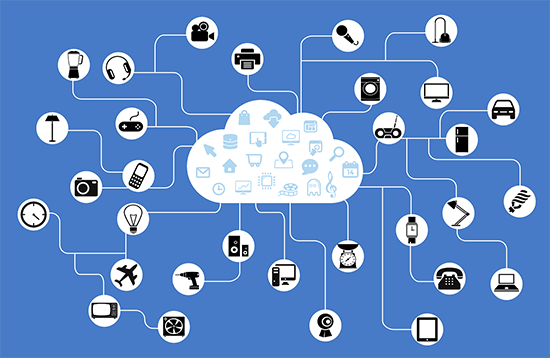
Jul 1, 2019
Blog Digital World Industry Trends in the IT Market
In 2018, a lot happened in the information technology industry, especially as it pertains to Internet of Things (IoT) and cloud computing technology, which are helping to connect technical devices and other smart objects to the internet and to each other.
With the latest developments in the field of IoT, and cloud and datacenters, industries are capable of revamping the entire business processes, from product design to system delivery to selling at point of sales (POS).
Additionally, artificial intelligence (AI) is still on the horizon. This level of processing will increase the requirements on network performance as well as storage of organizations’ intellectual or business data. Thus, the benefits of cloud and data center networks are starting to justify new investments, as legacy networks and storage technologies lack in capacity to deal with today’s environment.
In our full report, “2018 Information Technology Research Review,” we explain in depth what’s happening in several digital markets within the IT industry, including:
If you’re looking for quick insight into the trends occurring in each of the above markets, you’ll find today’s blog helpful.
Cloud and Data Center Network Technologies Global Markets
Fueled by the enhanced network processors and software-defined networks, cloud and data center networks are estimated to provide performance, reliability and cost-efficient breakthroughs over the next five years.
These capabilities answer the need for programmable networks that leverage denser chip sets and distributed infrastructure that operate in converged architectures and software-defined data centers.
IoT in Global Retail Markets
For retailers, IoT represents the further embedding of digital technology and virtual customer interactions into the retail value chain. For brick-and-mortar stores, IoT can be an equalizer, allowing them to compete with e-commerce providers with their own technology deployed within the buyers’ physical experience.
Specifically, retailers are investing in radio frequency identification (RFID) inventory tracking chips, traditional in-store infrared foot-traffic counters, cellular and Wi-Fi tracking systems, digital signage and kiosks, as well as applications for customers’ mobile devices.
Smart Home Technologies Global Markets
The global smart home market, with an impending demand for a universal solution, is driven by the intense focus of industry participants on pushing solutions across the mainstream. Driven by shifts in consumer behavior and technological developments, the market has been shifting from a luxury market into a mainstream market, and many new players are entering the market as a result.
However, consumers are faced with the challenges of integrating these complex platforms into a single home technology system. As such, smart home technology is still at the nascent stage because it is adopted by such a small percentage of the population.
Learn More About the Global IT Industry
To learn more about the global IT industry and other digital markets, download a complimentary chapter of our recent reports, “2018 Information Technology Research Review.”

Sarah Greenberg is the Manager of Content Marketing at BCC Research. She creates our blog, social media and email content.

From smartphones to satellites, antennas play a vital role in enabling the seaml...

Introduction Artificial Intelligence (AI) and the Internet of Things (IoT) are r...

We are your trusted research partner, providing actionable insights and custom consulting across life sciences, advanced materials, and technology. Allow BCC Research to nurture your smartest business decisions today, tomorrow, and beyond.
Contact UsBCC Research provides objective, unbiased measurement and assessment of market opportunities with detailed market research reports. Our experienced industry analysts assess growth opportunities, market sizing, technologies, applications, supply chains and companies with the singular goal of helping you make informed business decisions, free of noise and hype.